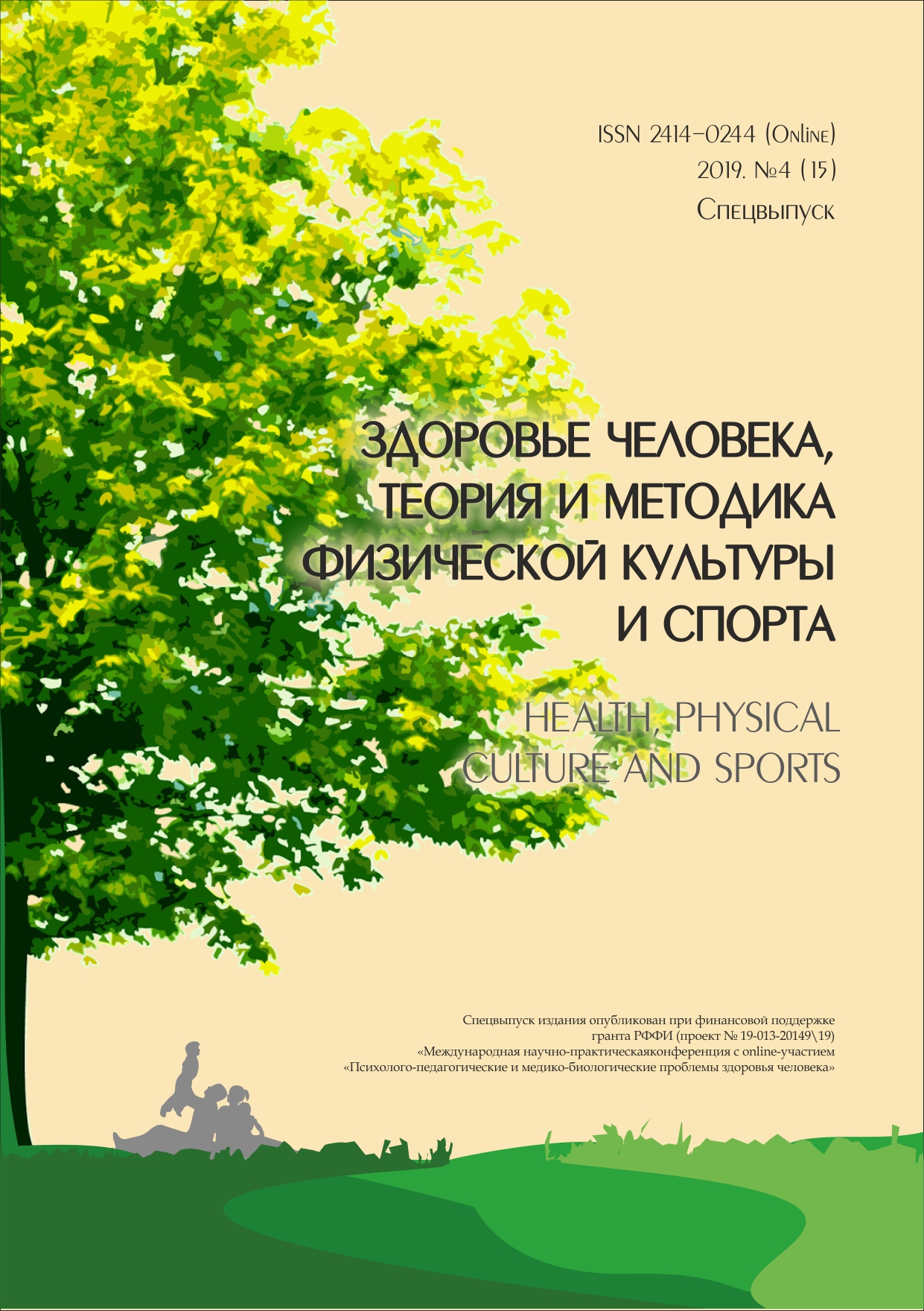FORMATION OF SPORTS RESULTS. CORRELATION OF POWER AND HEMOGLOBIN LEVEL
Abstract
In this article, was investigated the relationship between the hemoglobin level in athlete’sblood as the main factor influencing the aerobic performance of the body and the achievement of apotentially high sports result. The general role of hemoglobin described by chemical and biologicalpoints of view.The solution of the problem of delivering oxygen to working muscles is relevant throughout thedevelopment of sports activities and reaches a peak with a high level of fitness of an athlete whenperforming work of maximum and submaximal power.The most demanded oxygen supply in sports place highest demands on the delivery of oxygen tothe body and the removal of carbon dioxide from it. Such sports activities can be, for example, crosscountryskiing or athletics specialized in running for long and extra long distances.When a trained body has learned to supply the required amount of oxygen to working muscles,the problem arises of finding new ways to improve athlete’s fitness. The authors of this publicationexpressed the opinion that the dosed repeated physical load on short lengths can change thecomposition of the blood in such a way that it is possible to find the optimal ratio between suchworkouts and sports results.An important factor for the ability of blood to carry oxygen is hematocrit (the volume of red bloodcells). Hematocrit can change rapidly, it all depends on the intensity of training. It is able to increasedue to a decrease in plasma volume, especially with insufficient fluid replenishment, which, in turn, isassociated with thickening of the blood and, consequently, deterioration of oxygen transport.However, athletes are characterized by reduced hematocrit after exercise, despite the fact thatduring training the blood viscosity increases. By analyzing the data of scientific articles of the proposed topic, an assumption is made about thevariability of the hemoglobin level in the athlete’s blood when performing sports work of a certainpower, which makes it possible to selectively choose the training load
Downloads
References
Зеленкова И. Е., Зоткин С. В., Грушин А. А. Практическое применение оценки динамики параметров общей гемоглобиновой массы и объема циркулирующей крови методом возвратного дыхания монооксидом углерода в контексте тренировочного процесса // Спортивная медицина: наука и практика. 2014. № 4. С. 17–21.
Дроздов Д. Н., Кравцов А. В. Динамика срочной адаптации к действию регулярной физической нагрузки у молодых мужчин // Веснiк МДПУ iмя I. П. Шамякiна. 2017. № 2. С. 22–26.
Saurin Sanghavi и др. Effect Of Endurance Sports On Selected Haematological Parameters //International Journal of Basic and Applied Physiology. 2012. № 1. С. 26–29.
Митрофанов А. А., Литвиненко С. Н. Исследование показателей оксигенации крови при выполнении идентичной интервальной нагрузки в плавании и беге // Таврический научный обозреватель. 2017. № 10. С. 87–95.
Диверт В. Э. и др. Кардиореспираторные реакции на гипоксию и гиперкапнию у пловцов // Вестник Новосибирского государственного педагогического университета. 2017. Том 7,№ 5. С. 207–224.
Рылова Н. В., Биктимирова А. А., Назаренко В. С. Уровень максимального потребления кислорода как показатель работоспособности спортсменов, специализирующихся в различных видах спорта // Практическая медицина. 2014. № 9. С. 147–150.
Novack V. и др. The prevalence of low hemoglobin values among new infantry recruits and nonlinear relationship between hemoglobin concentration and physical fitness // American Journal of Hematology. 2007. № 82. С. 128–133.
Медведкова Н. И., Нохрин М. Ю., Медведков В. Д. Взаимосвязь уровня спортивной квалификации с параметрами гемограммы крови // Ученые записки университета имени П. Ф. Лесгафта. 2013. № 4. С. 100–105.
Рыбина И. Л. Биохимическая адаптация организма лыжников-гонщиков к высокоинтенсивным физическим нагрузкам в равнинных и горных условиях // Медико-биологические проблемы спорта. 2011. С. 47–50.
Kuipers H. и др. Hemoglobin level in Elite speed skaters from 2000 up to 2005, and its relationship with competitive results // Sports Med. 2006. № 27. С. 1–5.
Шихвердиев С. Н. Факторы спортивной адаптивности спортсменов, находящихся на этапе завершения карьеры в спорте // Научно-теоретический журнал «Ученые записки». 2010. № 1.С. 120–124.
Фармакологическая помощь спортсмену: коррекция факторов, лимитирующих спортивный результат / О. С. Кулиненков. М., 2007. С. 145.
ЧСС, лактат и тренировки на выносливость / Петер Янсен. Мурманск: Тулома, 2006. С. 160.
Физиология спорта / Дж. Х. Уилмор, Д. Л. Костилл. Киев: Олимпийская литература, 2001.С. 503.
Физиология спорта: учебное пособие / В. Г. Тристан, О. В. Погадаева. Омск: СибГУФК, 2003.С. 92.
Спортивная физиология: учебник для институтов физической культуры / Я. М. Коц. М.,1986. С. 91.
An author should not normally publish manuscripts describing essentially the same research in multiple journals or publication venues. Such redundant publication is generally considered to constitute unethical publishing behavior, and if discovered may result in a manuscript under consideration being rejected, or a published article being retracted.
Authors of manuscripts reporting on original research should present an accurate account of the work performed, accompanied by an objective discussion of its significance. Underlying data should be represented accurately in the manuscript. The manuscript should contain sufficient detail and references to permit others to replicate the work. The fabrication of results and the making of fraudulent or knowingly inaccurate statements constitute unethical behavior and may be cause for rejection or retraction of a manuscript or published article.





